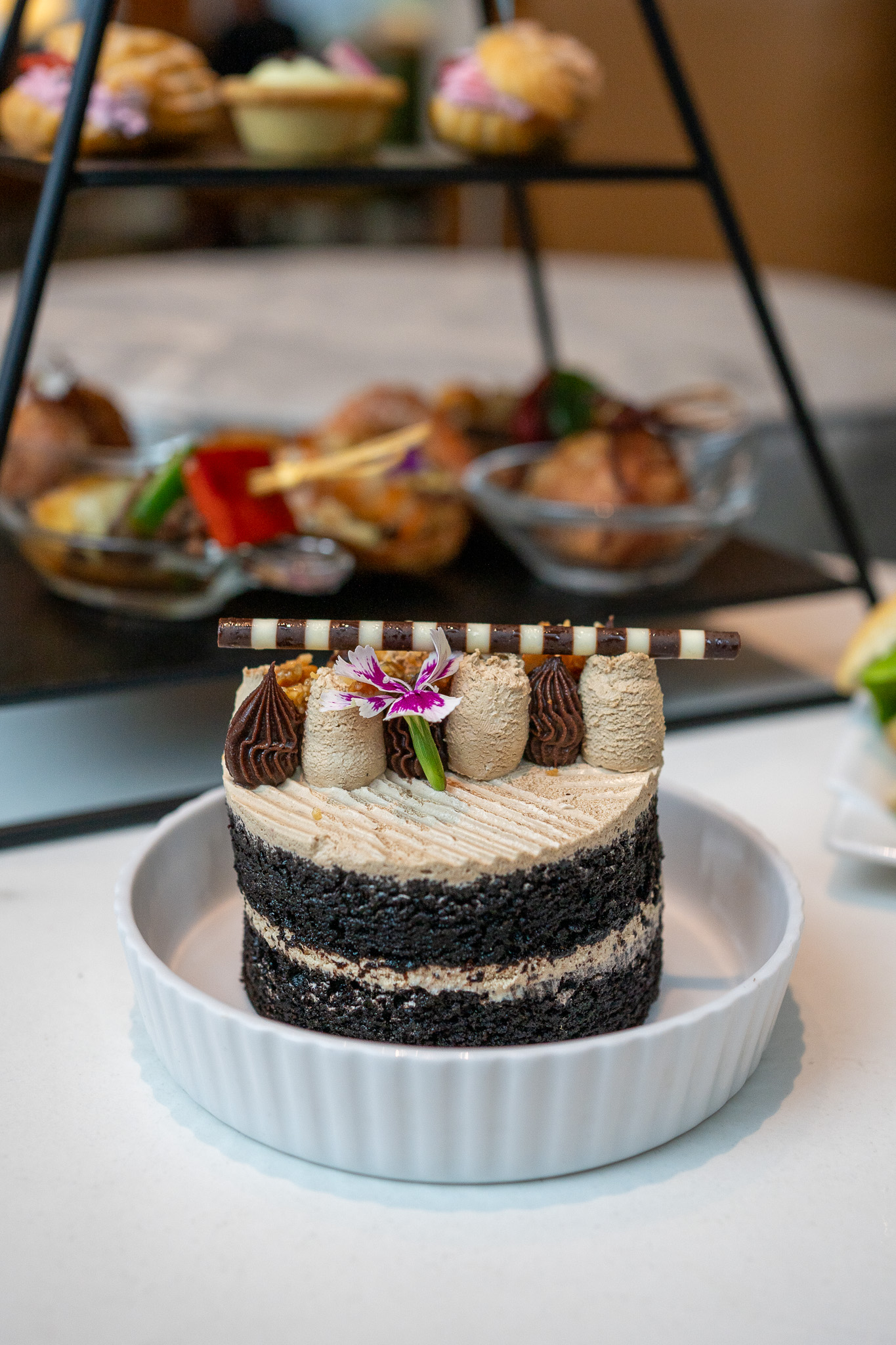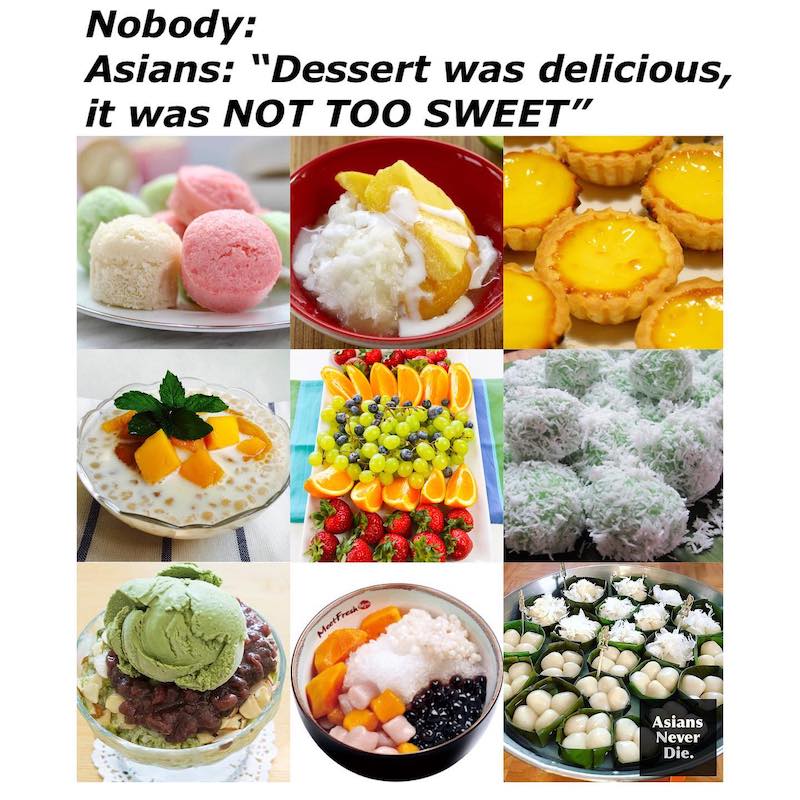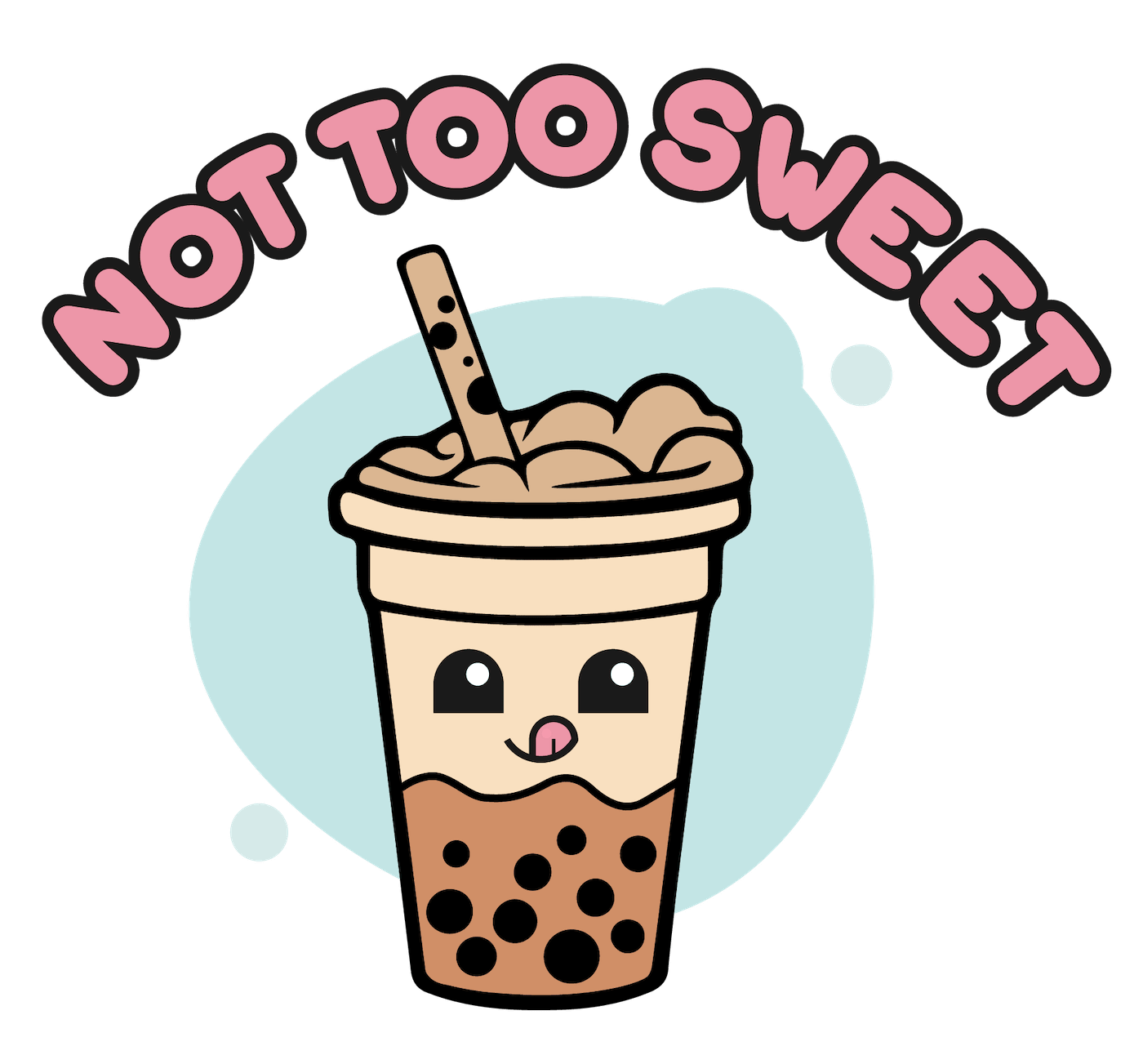Illustrations by Juliana Maia da Costa, Owner of TOCA Design and photos were taken myself.

Dalgona Cake from the Gourmet Bar in Novotel KLCC
As an Asian American-born woman, my upbringing lacked cloyingly sweet options. My mom would often thwart those desserts to help me maintain my figure so that I would be “marriageable” later in life. But that conversation is for another time.
We had desserts but they were often dried fruits from an aunty’s most recent trip to Vietnam. They were often presented to us as candy during the holidays. Some of the more popular candies were Mứt Mãng Cầu (Soursop Candy), sesame candy, banana candy, Haw Flakes, or White Rabbit candies.
These candies were all pretty natural in flavor, but we often didn’t go running for them.
My parents were entrepreneurs and owned a liquor store where they sold American candies and desserts such as Snicker bars, Butterfinger, Crunch, Zingers, Twinkies, Ding Dongs, and more. You name it, I have probably tried it once.
I had my fair share of American sweets between my parent’s liquor store and the convenience store at school.
In my adult years, and after working in one of the most popular boba tea shops in Orange County, I’ve developed a palatte for desserts and beverages that were more balanced than sweet.
It was much later in life (probably in my late 20’s) that I started to use the phrase “not too sweet” pretty often to describe deserts. Boba shops with ice and sugar preferences were popping up everywhere! Some shops even started to use natural fruits and eliminate fructose corn syrup from their menu altogether.
I was excited about this customization movement! It’s made everything much “healthier” and curtailed food waste to some extent. Take Subway and Chipotle for example. You only choose the items you want to include in your sandwich, burrito, or bowl.
I was stoked to learn that I am not the only one excited about the ability to control my sugar intake.

So what constitutes as “not too sweet?”
It’s hard to say and every person has their own preferences.
For me, my dessert choices will look a lot like this, I will politely decline a Laduree Macaron but will gladly consume a Puffy Pandy macaron.
I will decline a cake from the local grocery store but will opt for a Thai tea crepe cake.
Essentially, I will choose to buy pastries and sweets from Asian-owned establishments over American ones because they offer products that closely match my preferences.
This may be because many Asian-inspired desserts employ the subtle flavors of red bean, matcha, Thai tea, black sesame, and fresh fruit in their pastries.
The flavors taste more natural and less “sugary” than typical Western desserts like red velvet cake, buttercream frosting, or cream-filled donuts. However, I was always down for a Vietnamese cream puff.
View this post on Instagram
When I was younger I rejected many desserts that came to the table. Most were Vietnamese desserts that included jellies, coconut, and beans. As I got older and after trying various American desserts, I came to appreciate the subtle more natural flavors Asian desserts possessed.
And while there are desserts filled with sugar, there was something nostalgic about these desserts that would warrant an occasional visit. Some examples of these sweet desserts included condensed milk with a baguette (banh mi) or Vietnamese flan.
View this post on Instagram

View this post on Instagram
And if you’re wondering how can this blanket term for desserts be associated with all Asian Americans. Well, it doesn’t. There are still plenty of preferences out there and Asia is a huge continent with 50 countries and even more cultures, dialects, and cuisines.
On a trip to India for a friend’s wedding, we were bombarded with syrupy desserts including Jalebi and Gulab Jamun. These desserts shocked our palettes because they were overwhelmingly sweet. We could barely taste the cardamom and saffron used in the desserts.
It wasn’t until we traveled to Delhi and sampled a street dessert called, Daulat ki chaat. It’s a foamy and fluffy dessert with an airy texture. It tasted of saffron, rose water, and cream, and (you guessed it) was “not too sweet.”
This traditional treat is labor intensive and takes an entire evening to prepare and is most often served during Winter evenings so that it doesn’t melt in the heat.
So while the term “not too sweet” is commonly associated with Asian Americans, there is still a minority of Asians that crave sugar on everything.
Thank you for visiting today! If you found this encouraging or informative, please connect with us on Instagram or TikTok. Sign up for our monthly newsletter for updates and more. We promise we won't spam you! Feel free to unsubscribe anytime. If you're a brand and want to work with us, please visit this page to get in touch.


